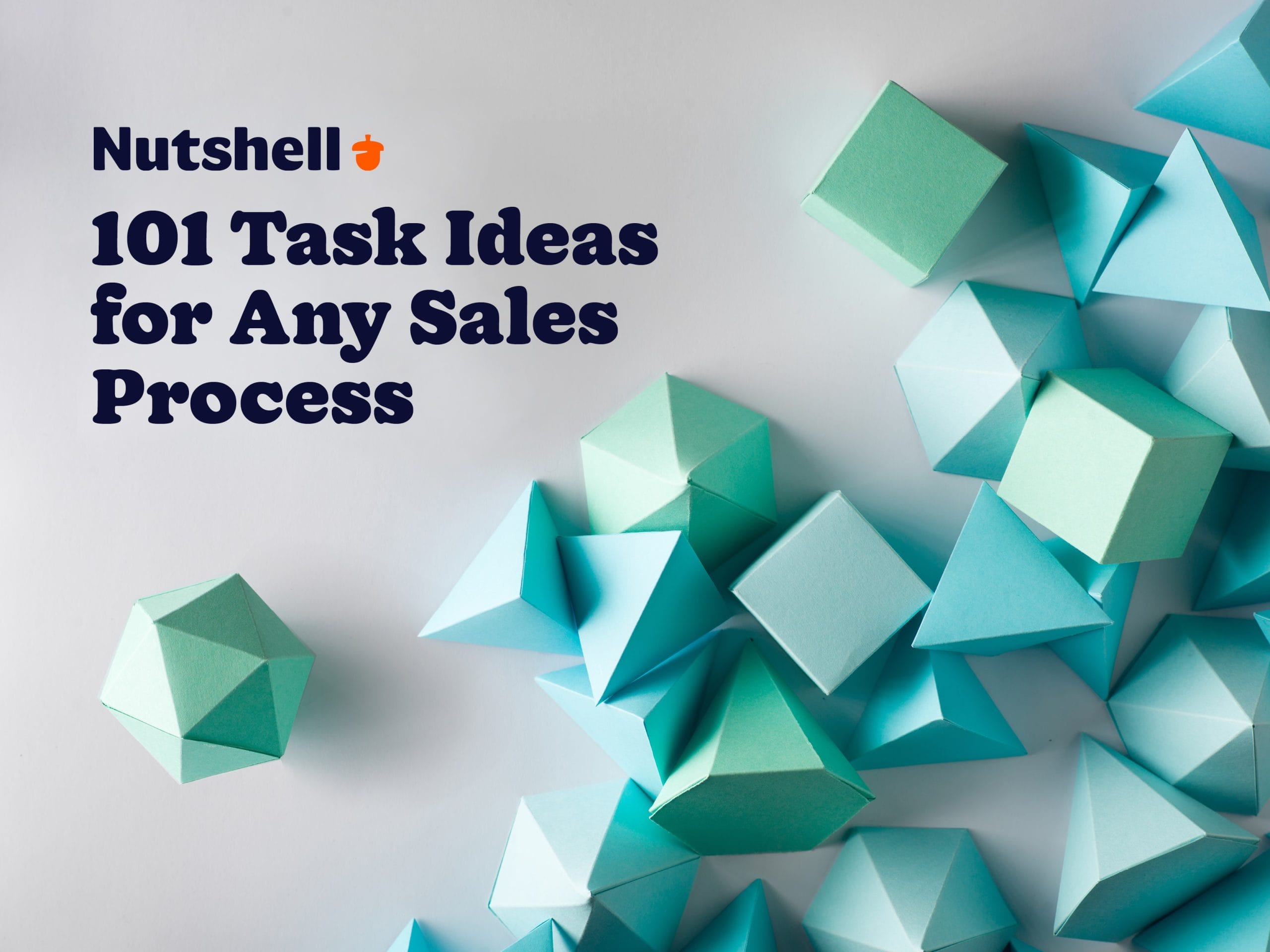
Lead scoring is a methodology used to rank prospects based on their attributes and behaviors, helping B2B sales and marketing teams prioritize those most likely to convert into customers. By combining explicit and implicit data, lead scoring enables more efficient targeting and improved ROI.
Every marketer knows that not every lead will turn into a paying customer. So, how do you identify which leads will most likely convert? Moreover, how can you improve your campaigns so they generate high-quality and converting leads?
Enter lead scoring. Marketing and sales teams can use lead scoring to identify a lead’s worthiness by assigning a numerical value based on their behavior toward a brand. Keep reading to learn what lead scoring is, why it’s important, the different lead scoring models, and best practices.
Lead scoring is the process of assigning values to leads based on a predetermined set of criteria. Each lead you generate is assigned a score based on a numerical scale that provides points for different attributes. Leads with the highest scores have the highest value or “worth” to your company because they will likely become your customers.
Assigning points, percentages, letter grades, or descriptive words like “hot” and “cold” are all common ways to express a lead score during the reporting and analysis process.
By having an objective framework to rank incoming leads, sales reps can prioritize the prospects that are ready to buy and identify the leads that need further nurturing from the marketing department.
Sales lead scoring can take many factors into account, including demographic and firmographic fit, online buying signals, and position in the buying cycle. These factors can be divided into explicit criteria and implicit criteria, or attributes, and combining them paints a picture of the prospect’s true value.
Explicit attributes are information that your leads provide to you directly, such as through an online form. Understanding this data requires little interpretation. This type of information is critical to understanding whether or not a prospect is a good fit for your product or service. Explicit scoring criteria can include:
The closer the prospect is to your ideal customer persona, the higher the lead’s score will be.
Implicit attributes are a little less clear-cut but are still useful for evaluating a lead. Implicit scoring is based on information that you infer about the prospect—usually from their online behavior. Implicit scoring criteria can include:
Of course, certain online interest signals should be given more weight than others. Visiting a product or pricing page implies more sales-readiness than a visit to a blog post or company “about” page, for example. Higher lead scores should be awarded to behavior that corresponds with further progress through the buying cycle.
The goal of lead scoring is to guide marketing and sales teams in determining the next best interaction with your leads. Your sales team can focus on leads that have the highest scores and are closest to making a purchase.
Meanwhile, your marketing team can focus on running nurture campaigns for leads with lower scores so that these leads can move through your pipeline.
But lead scoring can help more than just your marketing and sales teams. It can streamline your entire company’s processes as it allows various teams to collaborate. Your organization can reap these benefits from practicing lead scoring:
DOWNLOAD
If you’re unsure, our list of 101 Task Ideas for Any Sales Process will help you get started.

Now that we’ve answered the questions “What is lead scoring?” and “Why is lead scoring important?”, let’s look at the different lead scoring models you can employ for your business.
If you’re selling to a particular demographic, this lead scoring model suits your organization. Is your business offering products or services only in certain geographic locations? You can give negative scores to leads that aren’t within your business’s scope.
Find out your leads’ location by asking for demographic information through forms on your landing pages. Their responses will reveal whether they’re an excellent fit for your business or not. If a lead provides a location where your business doesn’t operate, you can deduct points from their score so that you can prioritize more relevant leads.
This lead scoring model is helpful for business-to-business (B2B) organizations. Are you selling a product or service that’s meant for large enterprises? Or are you offering a product that’s best suited for specific industries?
This lead scoring model helps you weed out prospects who may not be a good fit for your offerings. If you cater to large enterprises, you can subtract points from SMBs.
For example, your scheduling software is best for veterinary clinics. Non-veterinary clinics get negative scores, so your sales team can prioritize the leads that fit your target audience and will most likely convert.
How a site visitor navigates and interacts with your website says a lot about their interest in your offerings. Examine your leads who eventually became paying customers.
Which web pages did they visit before they became a customer? How many pages did they visit on average? Did they download white papers or studies along the way to becoming leads?
Consider giving higher points to leads who visited your high-value pages, like your pricing pages. Did they sign up for a free trial? These leads can get higher points, too. If they visited 20 pages in five days, they get higher points than leads who only visited five pages during the same period.
Do you have leads interacting less frequently on your site since their first interaction with you? You can deduct certain points after specific periods, say every 15 days. This strategy can help your sales team prioritize leads that are highly engaged and interested in your business.
This lead scoring model is similar to the online behavior model. The difference, though, is that the engagement model looks at how a lead is engaged with your campaigns. The more engaged they are, the more likely they are to convert.
If you’re running email campaigns among your newsletter subscribers, you can score them according to how engaged they are with your emails. Do they open your emails or click through the links within the email? Do they scroll to the bottom of the email?
Engagement behaviors like email open rate and click-through rate indicate how a lead engages with your business and how likely they are to convert.
In B2B sales, the million-dollar question is, “Who’s the decision maker at your target companies?” The answer depends on your offering and your intended clientele.
Your company’s budget and the position’s strategic relevance will determine how much weight you give to a person’s job title and degree of seniority. To find the right decision-maker at your target company, you should first figure out if your offering is:
Evaluating the influencers in your sales cycle is much easier after you have a firm grasp on the market segmentation that best describes your product or service.
The Sell to Win Playbook collects 55 of the best expert sales tips we’ve ever published. Download it today!

If you’re looking to get started with lead scoring, here are some best practices you can do for your business:
Do you offer more than one product or service? Create multiple lead scoring models for different products if each product has different ideal customer profiles.
Because the buyer persona for each product is unique, they have different demographics, online behaviors, and engagement. It makes sense not to use a generic scoring model for various leads.
You might also want to combine different attributes to get a more well-rounded lead score. For example, combining demographic data and online behavior tells you who a customer is and what actions they’re taking on your website, giving you a more comprehensive picture of your relationship with them.
Negative scoring is deducting points from prospects or leads for every action or inaction. It is a critical practice that allows you to focus on the right leads with the most interest in your business.
For example, if you use the online behavior scoring model, you want to count only page views that are relevant to their interest to convert. If you have a careers page, you’d like to exclude that from every additional point. You can also deduct points from leads who have stopped opening your emails.
For example, if you use the online behavior scoring model, you’d want to count the bottom-of-the-funnel (BOFU) pages that your prospects visit. A lead gets additional scores whenever they visit BOFU pages like service or product pages. When a user visits your careers page, however, points get deducted. As a result, you can see which prospects are highly interested in purchasing your products or services.
Determine the score that separates sales-qualified leads from ones that still need nurturing. No universal magic lead score exists because every company’s lead scoring model is different. Identify yours by consulting your sales team and getting feedback from your customers.
An essential step in qualifying leads is filtering out prospects who filled out landing page forms in ways that raise red flags for spam. You can check for “leads” that didn’t capitalize the initial letter of a name, a surname, or a corporate name.
You can also look for evidence that the lead typed in a term requiring four or more letters from the standard “QWERTY” keyboard layout.
In addition, you can compare the email formats of your leads to those of your existing customers. For instance, if you’re targeting corporations, you can weed out prospects with free email services instead of company domain addresses.
Customer behaviors change. Your products or services keep up with your customers’ needs. Your ideal customer also evolves.
For these reasons, lead scoring is not a one-and-done activity. Regularly review your lead scoring process so that it still precisely scores your leads’ intent to purchase.
A habit of scheduling regular reviews and optimizing your processes ensures you’re always in step with lead and customer trends as they change over time.
A method to rank leads by assigning values to their fit (explicit data like industry, size, role) and intent (implicit behavior like page views, email clicks) so sales can prioritize the most likely to convert.
You weight explicit and implicit criteria, give higher points to high-intent actions (e.g., pricing page visits, trial signups), use negative scores for poor fit, and apply score decay when engagement drops.
Common models include: Demographic, Company/Firmographic, Online Behavior, Engagement (campaign/email activity), and Authority Level (decision-making power).
It aligns marketing and sales, speeds up pipeline movement, raises close rates and rep productivity, improves ROI, and helps forecast whether you have enough qualified demand to hit targets.
Define your ICP and high-intent behaviors, choose a model (or hybrid), set weights and thresholds (e.g., MQL/SQL), include negatives and decay, align with sales on handoff rules, and review results regularly to recalibrate.
Lead scoring is an important process that helps streamline your business and benefits your bottom line. An affordable and easy-to-use customer relationship management (CRM) platform like Nutshell helps you with lead scoring through advanced lead attribution and reporting.
With Nutshell Analytics technology, you can understand where your leads come from and more importantly, which channel and campaigns translate into higher win rates.
Move your leads through your pipeline with Nutshell, a flexible CRM you can set up according to your business’s needs. Try Nutshell for free for 14 days!
Nutshell has what you’re looking for.


Join 30,000+ other sales and marketing professionals. Subscribe to our Sell to Win newsletter!
